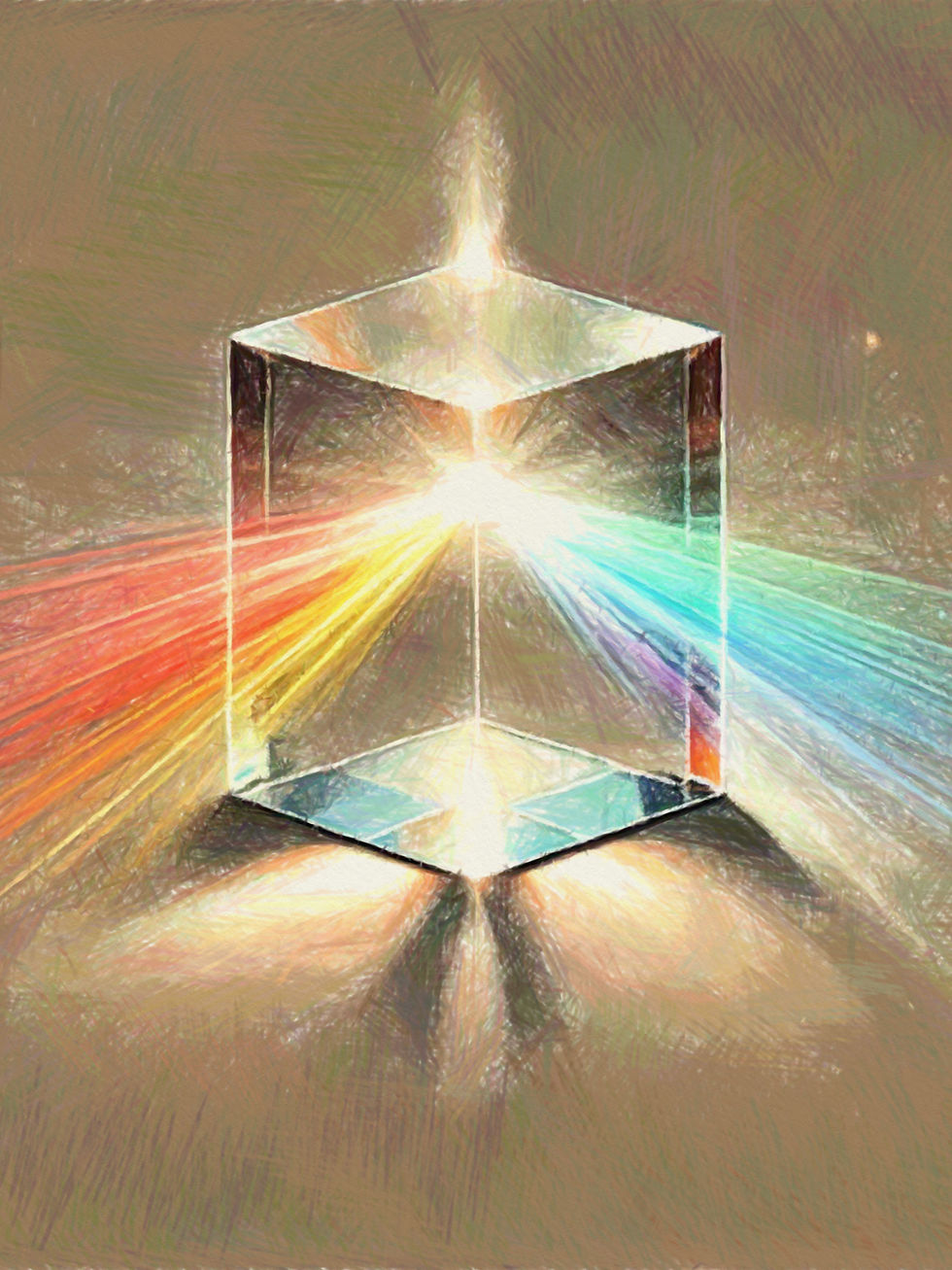RAH: The New Science of Colours - A Journey Through Perception, Memory, and Identity
- RAH Colours
- Apr 9, 2025
- 4 min read
We live in an era where colour has been reduced to technical measurements, to "science" in the coldest and most standardised sense of the term. Yet colour has never been, and never will be, something purely objective. Colour is a psychological act, a secret movement of consciousness, an invisible bridge connecting our inner world to the visible one.
The colour theories we’ve inherited, often still regarded as universal truths, are, in reality, cultural lenses: expressions of their time, shaped by specific paradigms and historical contexts.
RAH emerges from a blind spot in our culture: from the need to restore colour to its living and subjective nature, its ability to speak the language of the soul, not just the language of codes and numbers.

A Genealogy of Colour: Between Science, Perception, and the Invisible

For centuries, colour has been treated as an optical phenomenon, relegated to the realm of light waves. Newton, though not the first, played a pivotal role in shaping the “scientific” view of colour by decomposing white light into its “seven” primary colours, almost like dissecting a living body, while overlooking the essence that gives it life.
In contrast stands Goethe, who intuited that colour is not just light, but the meeting of light and shadow, of the external world and the watching eye. Goethe opened a rift: colour is also feeling, embodied experience, and cannot be reduced to a mere formula.
Steiner would later gather this heritage, pushing colour beyond the visible phenomenon toward the invisible: colour as a threshold between the material and the spiritual, as a vibration that resonates with our deepest emotions.
But alongside this "living" vision of colour, an opposite current developed, seeking to imprison it in systems and codes. With Munsell, colour became a language of "hues, values, and chromas" – necessary for industry, perhaps, but far from the complexity of human experience.
Yet, in the heart of the twentieth century, some attempted to reopen the discourse on the deeper meaning of colour: the Bauhaus, with Itten and Kandinsky, brought colour back to a relational, spiritual, emotional dimension. Colour was no longer just pigment or number but an echo of our emotions, an invisible architecture of our moods.
With Albers, finally, colour unmasks itself: never identical to itself, never absolute, but always a child of context and relationships.
The Blind Spot of Contemporary Culture: The Subjectivity of Colour
However, something is still missing, like a removed question: What does a colour mean to me? To me, who has a unique history, a unique body, my own wounds and dreams.
This is where RAH, the new science of colour, takes root: a method that starts from the human being, not from theory, and that finally celebrates the deeply subjective nature of colour.
Because a colour is never just a colour: it is imprinted memory, an emotional trace, an invisible bond with what we have experienced and with what, perhaps, we don't even dare to remember.
The Colour That Loved Us: Chromatic Memory
RAH is founded on a simple yet revolutionary insight: some colours have witnessed us in the most beautiful and intense moments of our lives. Colours that have enveloped our first loves, discoveries, rebirths, and most genuine tears.
And like everything tied to authentic emotion, these colours never leave us. They remain etched within, ready to resurface – and make us shine – when we finally recognise them.
This is the chromatic identity: a living and personal archive of colours that have loved us and can love us again if we know how to see them and bring them into our lives.

Beyond Colour Harmony: Colour as an Expression of Being
This is why RAH surpasses and integrates visions like Colour Harmony or the four seasons theory, which still have the merit of recognising the importance of a personal colour language. But while colour harmony looks at colour from the outside, as "what suits you," RAH looks within: what represents you, what speaks to you, what has accompanied you in your most authentic days.
A colour isn't "right" just because it looks good with your skin: it's right if it knows how to tell your story, if it knows how to bring to light who you are, your deepest you.
The RAH Revolution: Colour as a Tool for Identity and Well-being
With RAH, colour returns to being a tool for awareness and transformation, a faithful image of the most authentic identity. A means to rediscover oneself, to create environments, clothes, and objects that don't imitate trends but resonate with the truest part of ourselves.
This is why we say that RAH is not just "a new theory of colour." It's a revolutionary act: the recovery of colour as a living experience, as part of our memory and our history.
RAH teaches us that each person is an unrepeatable chromatic cosmos. And that in that cosmos live the colours that have seen us being born, falling, loving, and rising again.











Comments